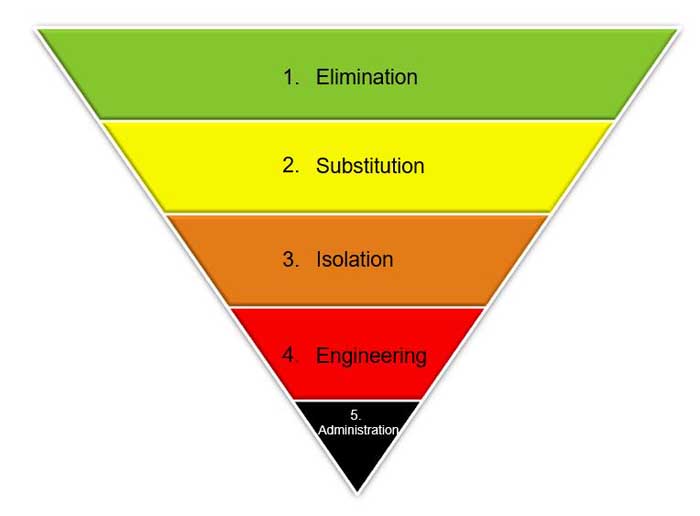The Hierarchy of Control is a system used to minimise or eliminate risks associated with specific tasks or hazards.
When applied to working at height, it aims to prevent the occurrence of a fall from height. This can be achieved either by eliminating the need to work above the ground or by providing a solid elevated construction from where the work can be performed.
When this is not possible, the risk of a potential fall must be minimised through the application of control measures further down the Hierarchy of Control.

Elimination
Eliminate the hazard by undertaking the work from ground level or from a solid construction. Redesign should be considered to eliminate the need for working at height.
Substitution
Change the control measure to undertake the work from a safe zone. The equipment requiring maintenance should be relocated to eliminate the need for the operator to enter the danger zone.
Isolation
Separate the operator from the hazard by means of passive fall protection. A plant screen, barrier or guardrail will effectively prevent a fall while maintenance is being undertaken.
Engineering
Manage the risk using an engineered control. Work undertaken using fall arrest systems requires operator training but will prevent a fall from occurring when used correctly.
Administration
Apply procedure to control the risk. The environment can be managed using signage, demarcation line marking and operational instructions. It is important to note that the level of Hierarchy of Control is equivalent to the risk of injury as a result of operator incompetence. A lesser control measure requires greater skill of the operator and is, therefore, the least preferred.

